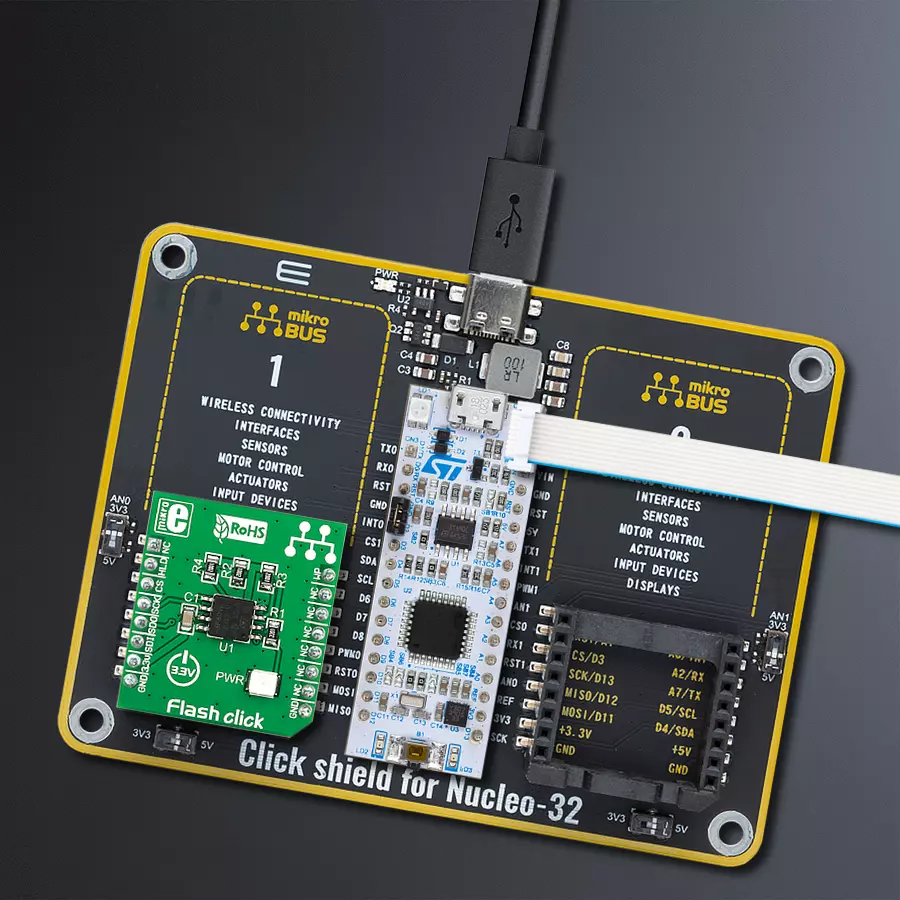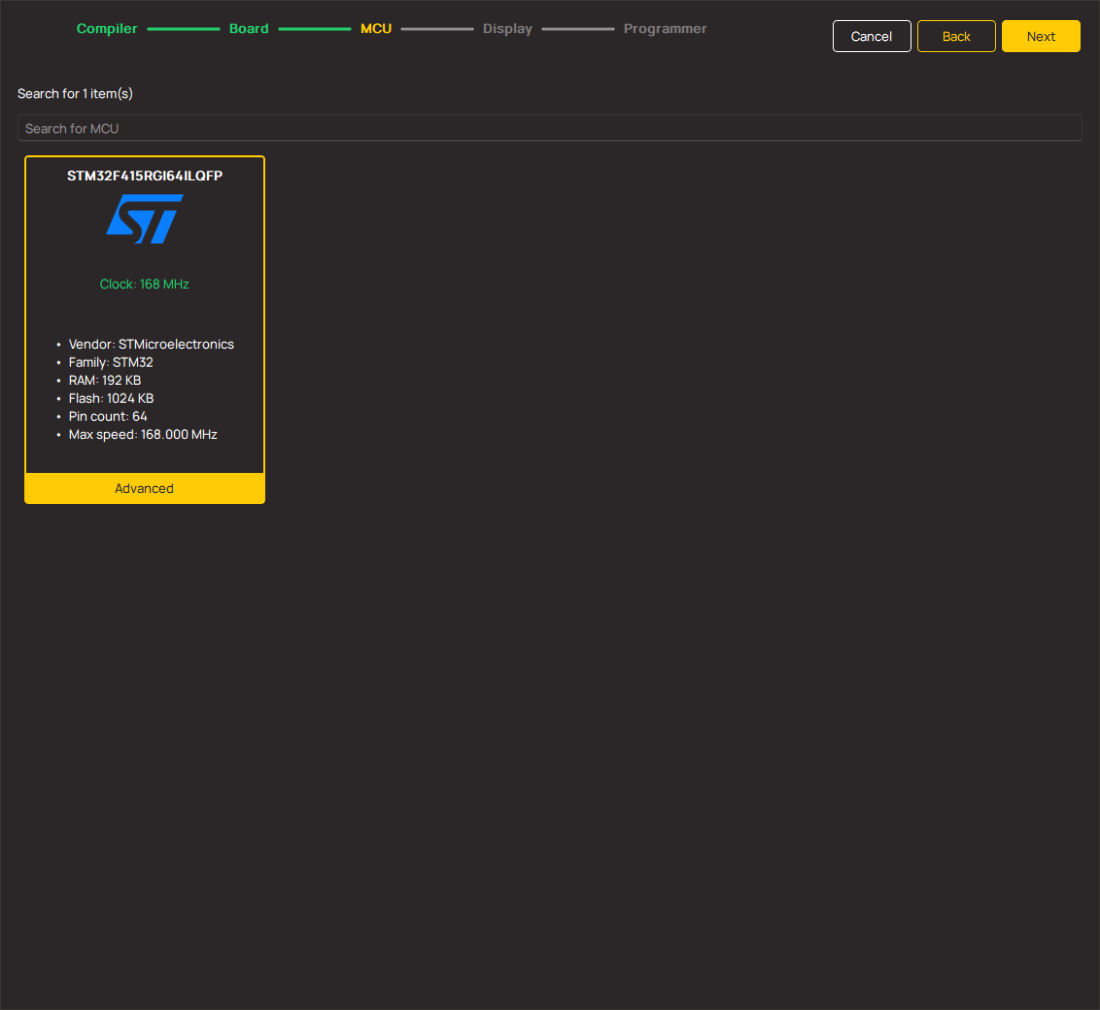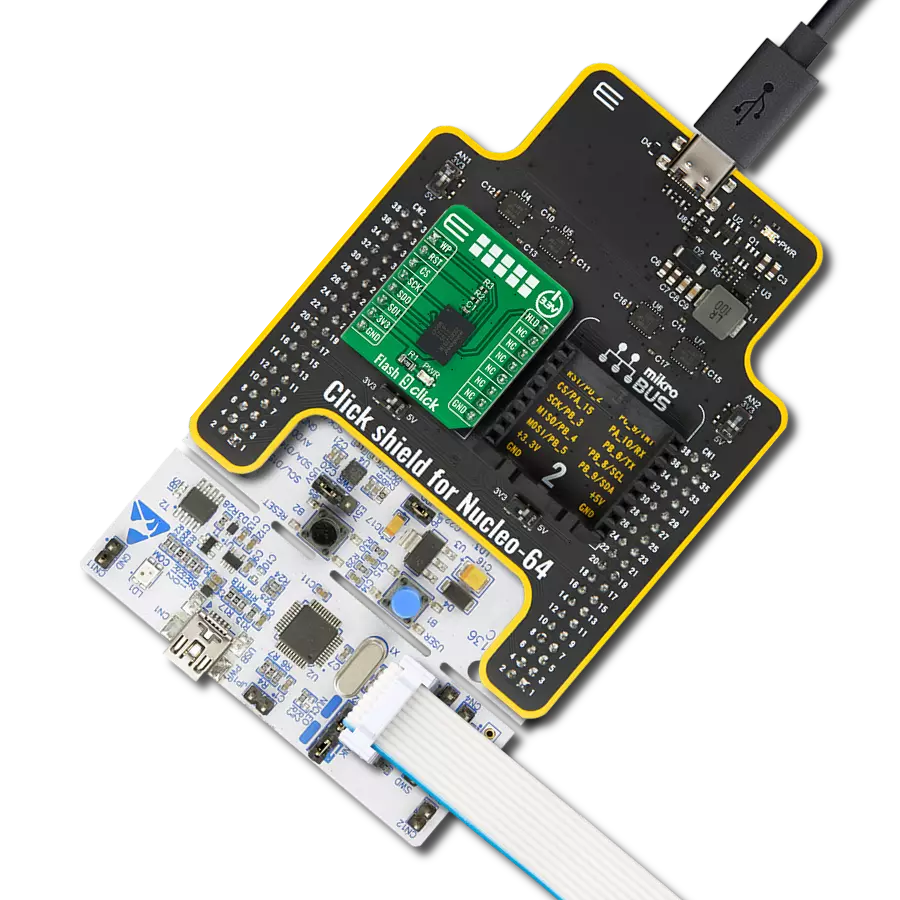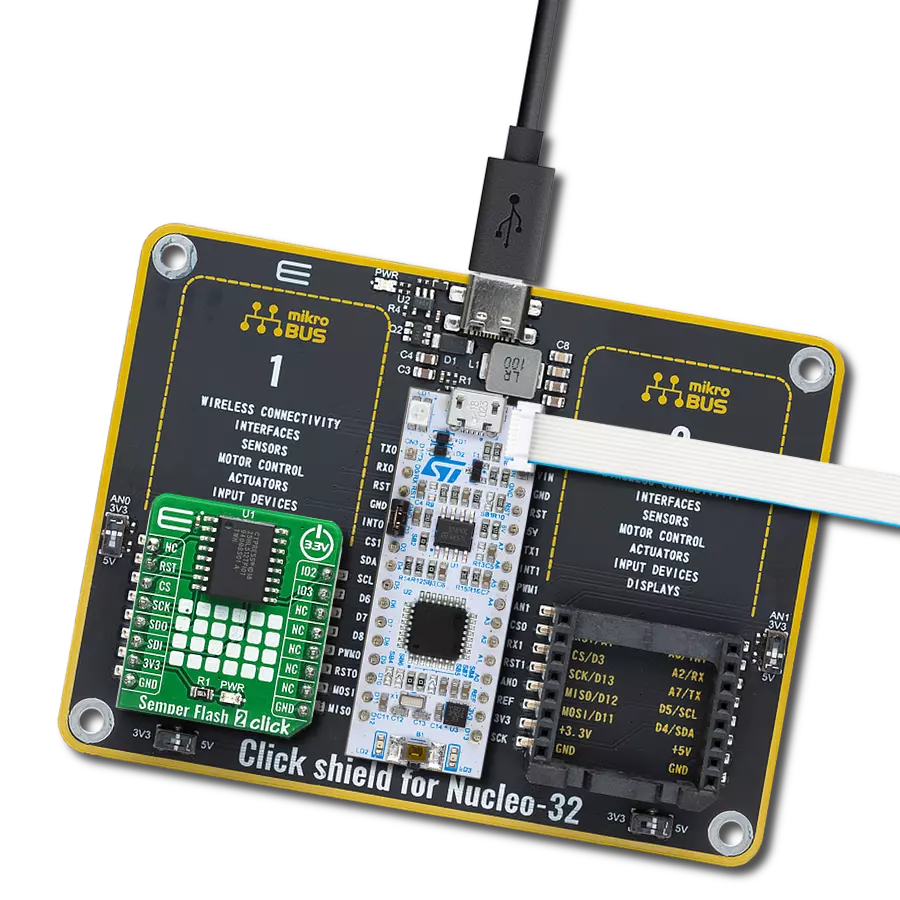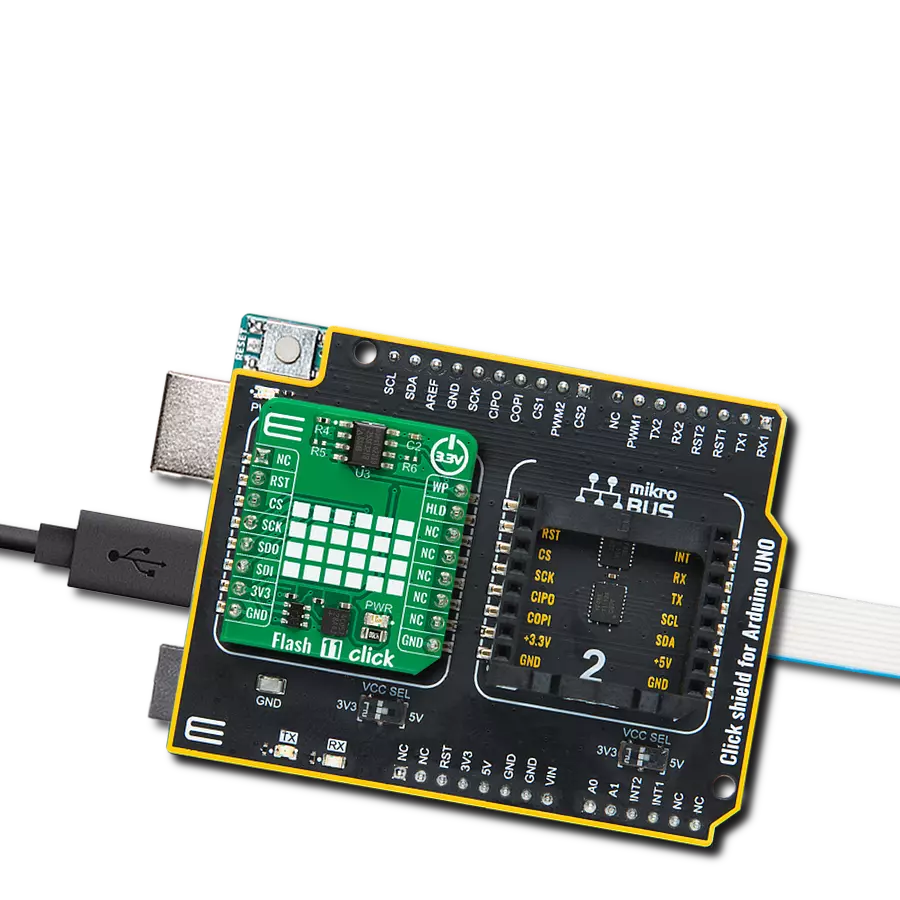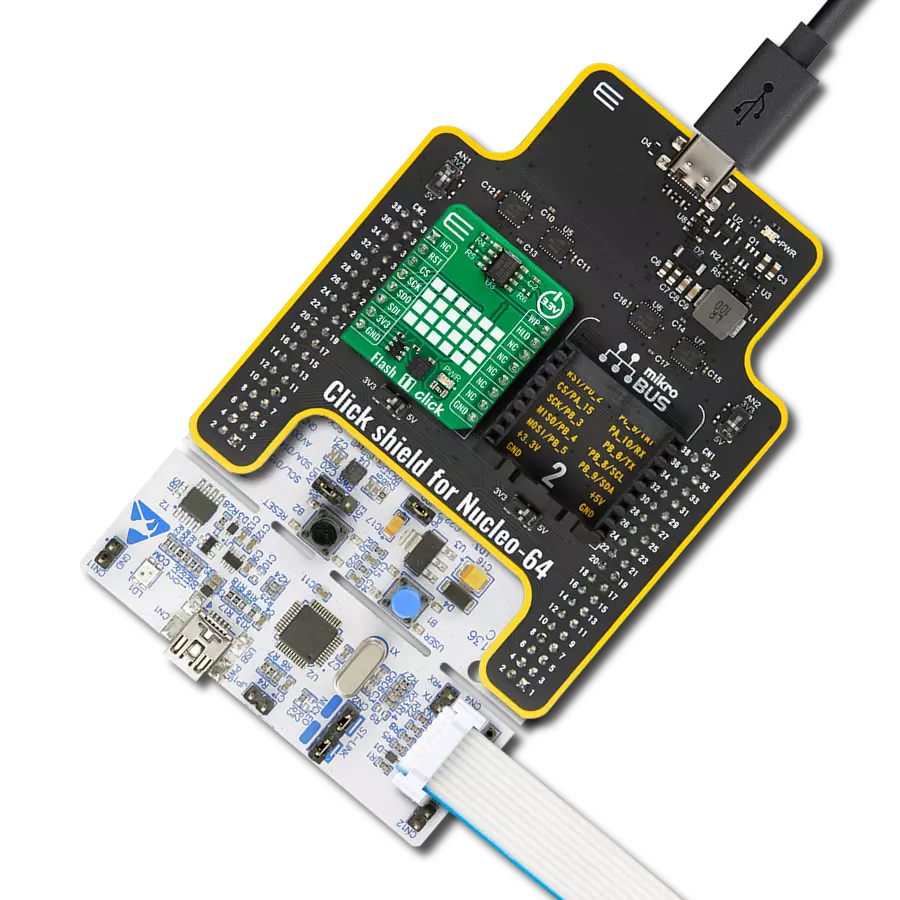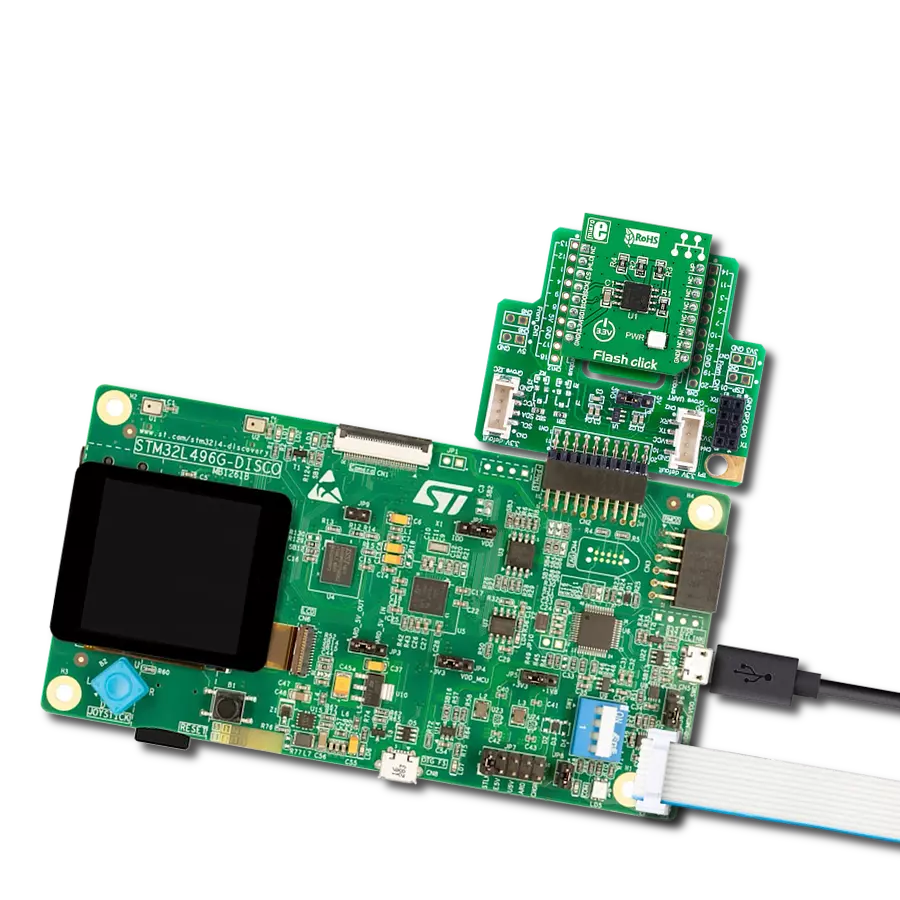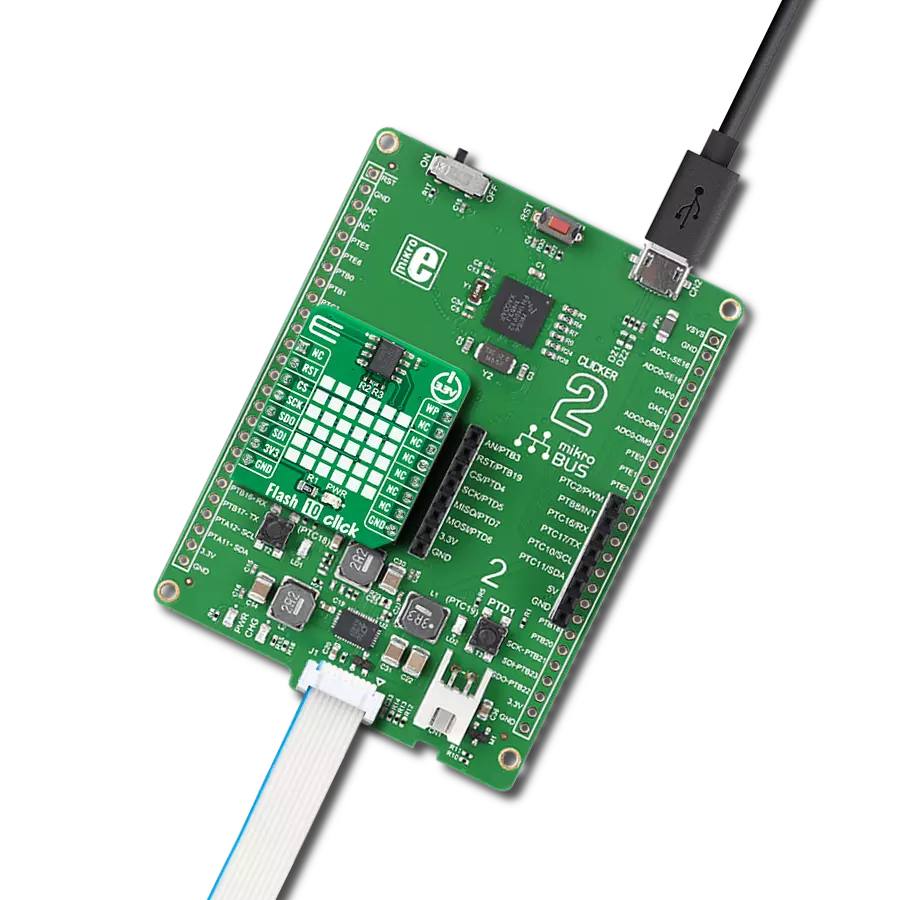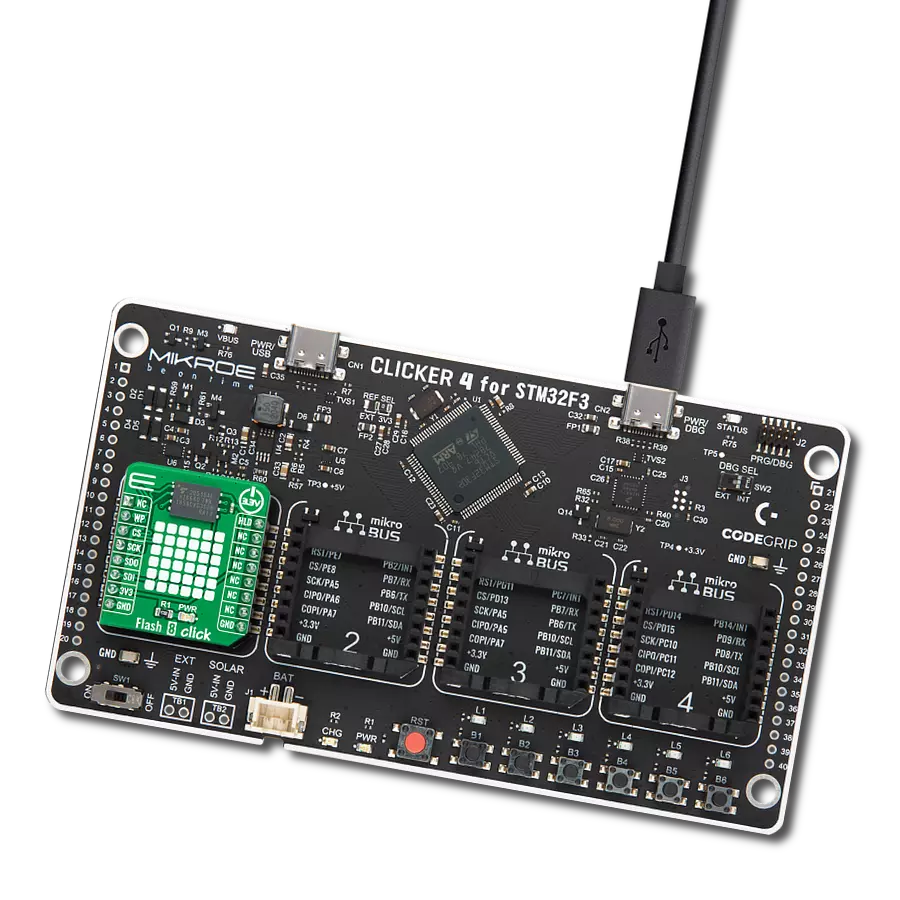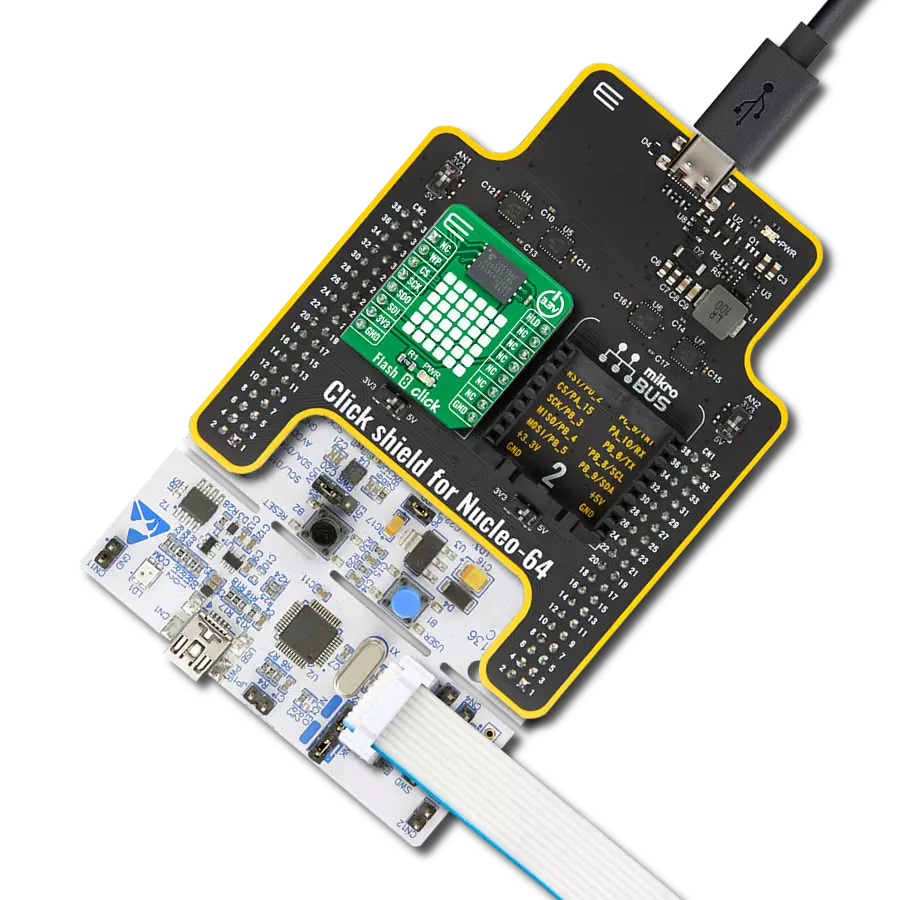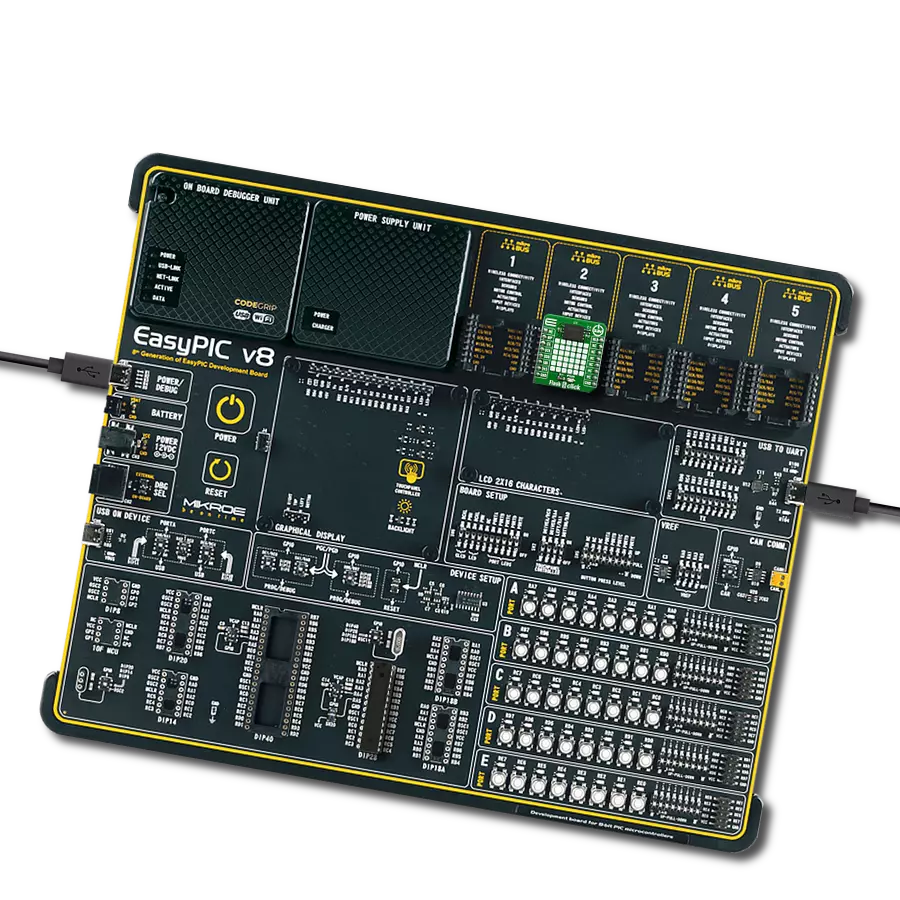Robust and reliable memory solution with a decent storage capacity, advanced write protection, and excellent endurance
A
A
Hardware Overview
How does it work?
Flash Click is based on the EN25Q80B, a serial flash memory from EON Silicon Solutions. The EN25Q80B features Serial Flash Discoverable Parameters (SFDP) mode, used to retrieve advanced information from the device, such as the operating characteristics, structure and vendor-specified information, memory size, operating voltage, timing information, and more. Page Program instruction allows up to 256 bytes to be written during one write cycle, although it is possible to write less than that. By automatically incrementing the addresses, it is possible to read the entire memory by a single command. The
EN25Q80B allows the erasure of one sector at a time, half a block at a time, block at a time, and the entire memory. The addition of 512 bytes of one-time programmable (OTP) memory can be useful for building secure storage devices and similar secure storage applications. Flash Click uses a standard 4-Wire SPI serial interface to communicate with the host MCU, supporting Dual SPI and Quad SPI modes, which utilize these two additional modes, allowing faster data transfer speeds several times. There are additional WP for the write protect function and HLD pins. If using Quad SPI, the SDI and SDO become DQ0 and
DQ1, while WP and HLD become DQ2 and DQ3, respectively. Due to a small number of MCUs that support Dual and Quad SPI, MIKROE offers library functions that work only with standard SPI communication, ensuring absolute compatibility with all the supported MCUs. This Click board™ can be operated only with a 3.3V logic voltage level. The board must perform appropriate logic voltage level conversion before using MCUs with different logic levels. Also, it comes equipped with a library containing functions and an example code that can be used as a reference for further development.
Features overview
Development board
Nucleo 32 with STM32F031K6 MCU board provides an affordable and flexible platform for experimenting with STM32 microcontrollers in 32-pin packages. Featuring Arduino™ Nano connectivity, it allows easy expansion with specialized shields, while being mbed-enabled for seamless integration with online resources. The
board includes an on-board ST-LINK/V2-1 debugger/programmer, supporting USB reenumeration with three interfaces: Virtual Com port, mass storage, and debug port. It offers a flexible power supply through either USB VBUS or an external source. Additionally, it includes three LEDs (LD1 for USB communication, LD2 for power,
and LD3 as a user LED) and a reset push button. The STM32 Nucleo-32 board is supported by various Integrated Development Environments (IDEs) such as IAR™, Keil®, and GCC-based IDEs like AC6 SW4STM32, making it a versatile tool for developers.
Microcontroller Overview
MCU Card / MCU

Architecture
ARM Cortex-M0
MCU Memory (KB)
32
Silicon Vendor
STMicroelectronics
Pin count
32
RAM (Bytes)
4096
You complete me!
Accessories
Click Shield for Nucleo-32 is the perfect way to expand your development board's functionalities with STM32 Nucleo-32 pinout. The Click Shield for Nucleo-32 provides two mikroBUS™ sockets to add any functionality from our ever-growing range of Click boards™. We are fully stocked with everything, from sensors and WiFi transceivers to motor control and audio amplifiers. The Click Shield for Nucleo-32 is compatible with the STM32 Nucleo-32 board, providing an affordable and flexible way for users to try out new ideas and quickly create prototypes with any STM32 microcontrollers, choosing from the various combinations of performance, power consumption, and features. The STM32 Nucleo-32 boards do not require any separate probe as they integrate the ST-LINK/V2-1 debugger/programmer and come with the STM32 comprehensive software HAL library and various packaged software examples. This development platform provides users with an effortless and common way to combine the STM32 Nucleo-32 footprint compatible board with their favorite Click boards™ in their upcoming projects.
Used MCU Pins
mikroBUS™ mapper
Take a closer look
Click board™ Schematic

Step by step
Project assembly
Software Support
Library Description
This library contains API for Flash Click driver.
Key functions:
flash_write_page- Page Write functionflash_read_page- Page Read functionflash_erase_sector- Sector Erase function
Open Source
Code example
The complete application code and a ready-to-use project are available through the NECTO Studio Package Manager for direct installation in the NECTO Studio. The application code can also be found on the MIKROE GitHub account.
/*!
* \file main.c
* \brief Flash Click example
*
* # Description
* This example demonstrates the use (control) of the FLASH memory.
*
* The demo application is composed of two sections :
*
* ## Application Init
* Initializes all necessary peripherals and pins used by Flash Click and also
* initializes uart logger to show results.
*
* ## Application Task
* Executes memory data writing, reading from the memory to verify data writing
* operation and sector erasing to clear memory.
*
* ## Additional Functions
* - Enter Data / Allows user to enter a desired data.
* - Process Wait / Makes a delay to wait while some process be done.
*
* \author Nemanja Medakovic
*
*/
// ------------------------------------------------------------------- INCLUDES
#include <string.h>
#include "board.h"
#include "log.h"
#include "flash.h"
// ------------------------------------------------------------------ VARIABLES
static flash_t flash;
static log_t logger;
static uint8_t data_buf[ 30 ];
static uint8_t n_data;
// ------------------------------------------------------- ADDITIONAL FUNCTIONS
void enter_data( unsigned char *buffer )
{
uint8_t data_size;
data_size = sizeof( data_buf );
memset( data_buf, 0, data_size );
n_data = 0;
data_size--;
while ( ( *buffer != 0 ) && ( data_size > 0 ) )
{
data_buf[ n_data ] = *buffer;
buffer++;
n_data++;
data_size--;
}
}
void process_wait( void )
{
uint8_t cnt;
for ( cnt = 0; cnt < 9; cnt++ )
{
Delay_ms ( 400 );
log_printf( &logger, "****" );
}
log_printf( &logger, "\r\n" );
Delay_ms ( 400 );
}
// ------------------------------------------------------ APPLICATION FUNCTIONS
void application_init( void )
{
flash_cfg_t flash_cfg;
log_cfg_t log_cfg;
/**
* Logger initialization.
* Default baud rate: 115200
* Default log level: LOG_LEVEL_DEBUG
* @note If USB_UART_RX and USB_UART_TX
* are defined as HAL_PIN_NC, you will
* need to define them manually for log to work.
* See @b LOG_MAP_USB_UART macro definition for detailed explanation.
*/
LOG_MAP_USB_UART( log_cfg );
log_init( &logger, &log_cfg );
log_info( &logger, "---- Application Init ----" );
// Click initialization.
flash_cfg_setup( &flash_cfg );
FLASH_MAP_MIKROBUS( flash_cfg, MIKROBUS_1 );
flash_init( &flash, &flash_cfg );
// Click reset and default configuration.
flash_reset( &flash );
flash_default_cfg( &flash );
log_printf( &logger, "*** Flash Initialization Done. ***\r\n" );
log_printf( &logger, "************************************\r\n" );
}
void application_task( void )
{
enter_data( "Mikroelektronika (MikroE)" );
log_printf( &logger, "> Data content to be written: %s\r\n", data_buf );
log_printf( &logger, "> Data writing to memory...\r\n" );
flash_write_page( &flash, FLASH_MEM_ADDR_FIRST_PAGE_START, data_buf, n_data );
log_printf( &logger, "> Done.\r\n" );
memset( data_buf, 0, sizeof( data_buf ) );
process_wait( );
log_printf( &logger, "> Data reading from memory...\r\n" );
flash_read_page( &flash, FLASH_MEM_ADDR_FIRST_PAGE_START, data_buf, n_data );
log_printf( &logger, "> Done.\r\n> Read data content: %s\r\n", data_buf );
process_wait( );
log_printf( &logger, "> Sector erasing...\r\n" );
flash_erase_sector( &flash, FLASH_MEM_ADDR_FIRST_SECTOR_START );
log_printf( &logger, "> Done.\r\n" );
process_wait( );
}
int main ( void )
{
/* Do not remove this line or clock might not be set correctly. */
#ifdef PREINIT_SUPPORTED
preinit();
#endif
application_init( );
for ( ; ; )
{
application_task( );
}
return 0;
}
// ------------------------------------------------------------------------ END
Additional Support
Resources
Category:FLASH








